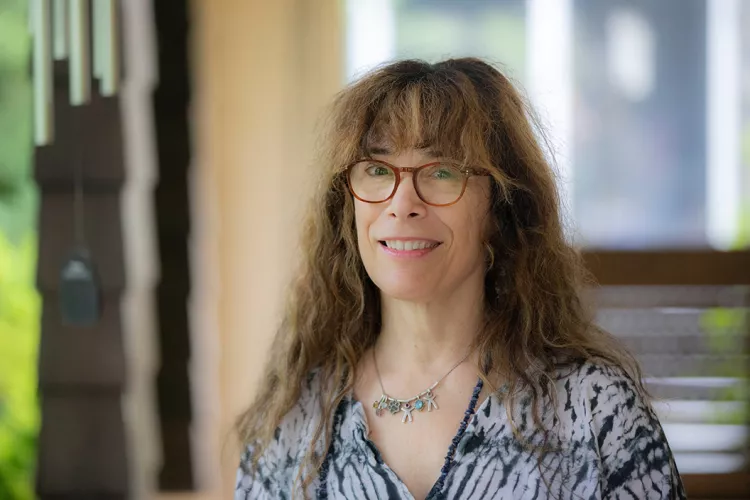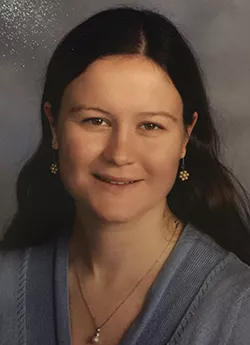Physicist Amy Graves and Students Examine the Physics of Structured Randomness

Walter Kemp Professor in the Natural Sciences and Professor of Physics Amy Graves
Ever try pouring dog kibble out of a container and then the pieces stop flowing? The opening is bigger than the bits of food, yet somehow it clogs, forming a solid structure.
This phenomenon, called jamming, is studied in an area of physics known as “soft and granular matter.” It is also the subject of a recent study conducted by several students under the guidance of Amy Graves, the Walter Kemp Professor in the Natural Sciences and Professor of Physics. Titled “Structured Randomness: Jamming of Soft Discs and Pins,” their paper is the culmination of three years of research, building on the senior thesis of Prairie Wentworth-Nice ’18, who graduated with high honors in physics and mathematics.
“Seeing the work from my undergraduate thesis published is definitely amazing, but the experience of working on this project with Amy and being involved in a research project from start to finish has been the most rewarding piece of this journey,” says Wentworth-Nice, who is now pursuing a mathematics Ph.D. at Cornell University.
Appearing in the journal Soft Matter, “Structured Randomness” specifically explores the effects of “pinning,” or stabilizing, individual particles into a fixed square lattice, and how those pins can change the structure of an otherwise random solid. Along with Wentworth-Nice and Graves, the paper is co-authored by Brian Jenike ’20, Ari Liloia ’21, and Sean Ridout, a physics graduate student at the University of Pennsylvania.
“One of our driving questions was: If you put pins in a regular lattice and you increase the pin density, is there a sense in which they get the system organized, they make it jam more readily, and that they change the structure in meaningful ways?” says Graves, who with Assistant Professor of Physics Cacey Bester received a National Science Foundation grant beginning this year to further their research in soft and granular matter physics.

“Seeing the work from my undergraduate thesis published is definitely amazing, but the experience of working on this project with Amy and being involved in a research project from start to finish has been the most rewarding piece of this journey,” says Wentworth-Nice.
“What Prairie’s work elucidated and what our work the following two summers showed is that there are ways in which this completely random, jammed configuration starts to figure itself out and become less random. There are fingerprints for structure that show up.”
The field of jamming, Graves says, is “the physics of the everyday,” highlighting the properties of granular matter like salt or flour, or of soft matter like shaving cream or mayonnaise. As an interfacial area combining physics, chemistry, and materials science, jamming physics looks at matter’s transition from liquid to solid to gas — the fluidity of sand, for example, that allows it to be stirred, and the gaslike properties that allow it to disperse in the air.
The findings in “Structured Randomness,” produced through computer simulations under idealized conditions, could help strengthen or identify failure points in jammed solids. These structures have numerous applications, Graves notes, including as metamaterials in quick-assembly construction or as skeletons in more permanent architecture.
Graves praised the researchers for their hard work and dedication, calling it a joy to collaborate with students inside the lab. The feeling among the younger scholars was mutual.
“I am very proud of the work I did that was represented in the paper, and I truly enjoyed working in Professor Graves’s lab,” adds Liloia, a physics major from Haddonfield, N.J. “Seeing some of my own results published has truly made me feel like I have a future as a scientist.”



